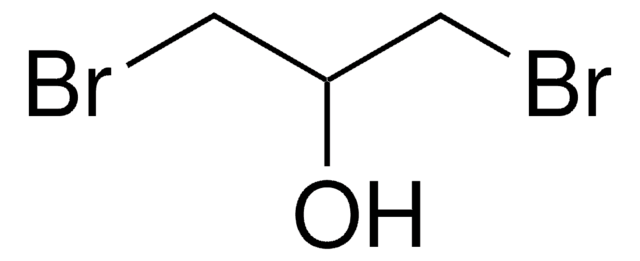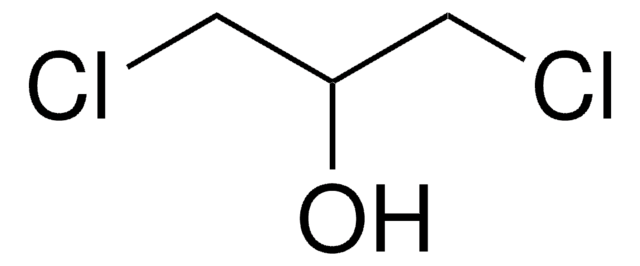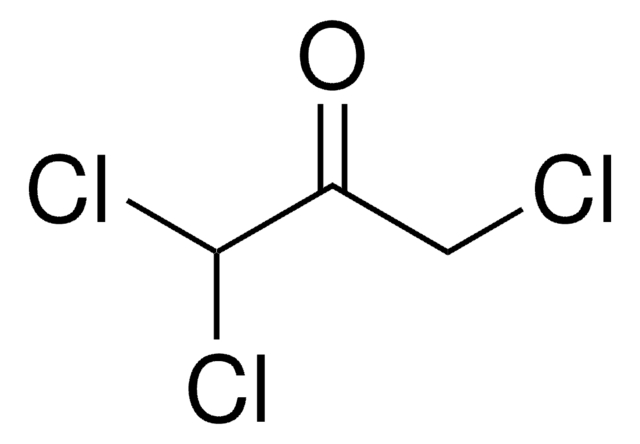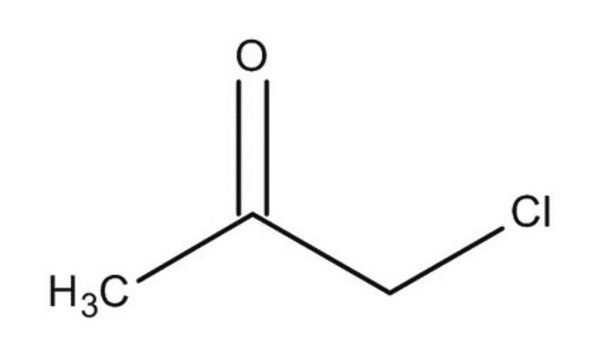168548
1,3-Dichloroacetone
≥95%
About This Item
Produits recommandés
Densité de vapeur
4.38 (vs air)
Niveau de qualité
Pression de vapeur
<0.1 mmHg ( 20 °C)
Essai
≥95%
Forme
solid
pb
173 °C (lit.)
Pf
39-41 °C (lit.)
Solubilité
alcohol: very soluble
diethyl ether: very soluble
water: soluble
Densité
1.383 g/mL at 25 °C (lit.)
Groupe fonctionnel
chloro
ketone
Température de stockage
2-8°C
Chaîne SMILES
ClCC(=O)CCl
InChI
1S/C3H4Cl2O/c4-1-3(6)2-5/h1-2H2
Clé InChI
SUNMBRGCANLOEG-UHFFFAOYSA-N
Catégories apparentées
Description générale
1,3-dichloroacetone is a dihaloketone derivative used as a reagent in the synthesis of complex multicyclic peptides.
Application
Mention d'avertissement
Danger
Mentions de danger
Classification des risques
Acute Tox. 1 Inhalation - Acute Tox. 2 Dermal - Acute Tox. 2 Oral - Muta. 2 - Skin Corr. 1B
Code de la classe de stockage
6.1A - Combustible acute toxic Cat. 1 and 2 / very toxic hazardous materials
Classe de danger pour l'eau (WGK)
WGK 3
Point d'éclair (°F)
Not applicable
Point d'éclair (°C)
Not applicable
Équipement de protection individuelle
Eyeshields, Faceshields, Gloves, type P3 (EN 143) respirator cartridges
Faites votre choix parmi les versions les plus récentes :
Déjà en possession de ce produit ?
Retrouvez la documentation relative aux produits que vous avez récemment achetés dans la Bibliothèque de documents.
Les clients ont également consulté
Notre équipe de scientifiques dispose d'une expérience dans tous les secteurs de la recherche, notamment en sciences de la vie, science des matériaux, synthèse chimique, chromatographie, analyse et dans de nombreux autres domaines..
Contacter notre Service technique













